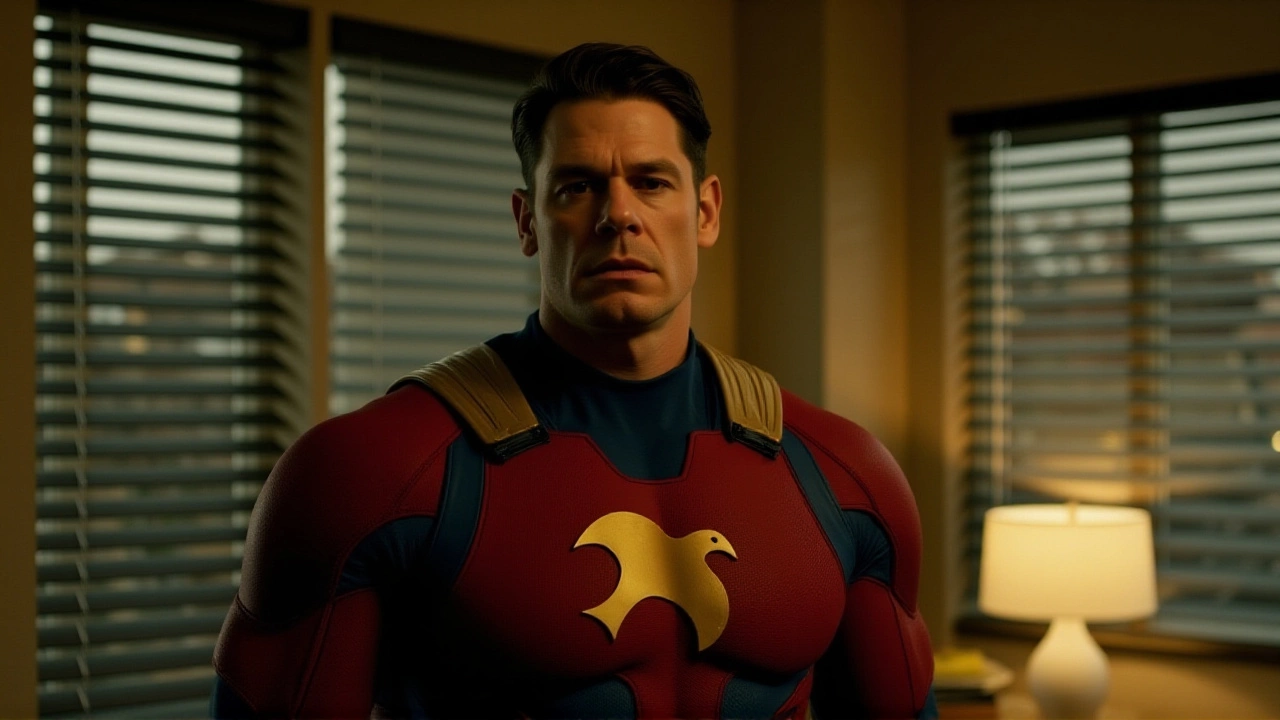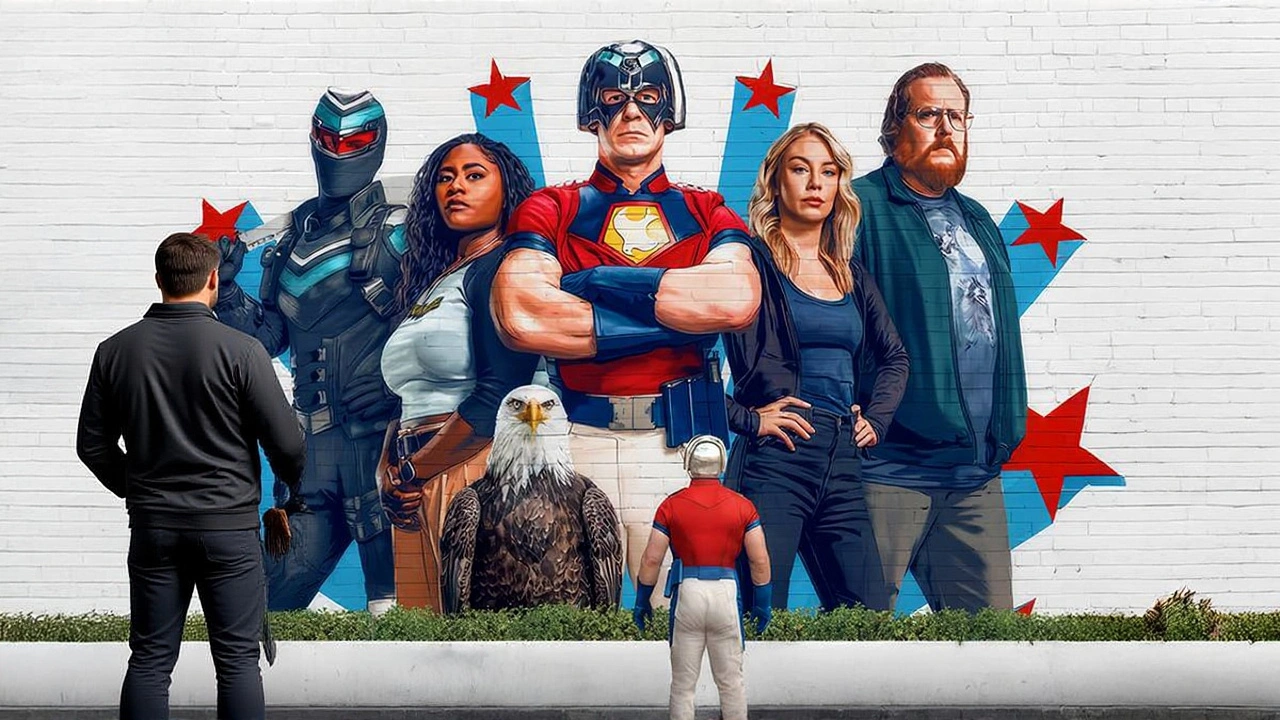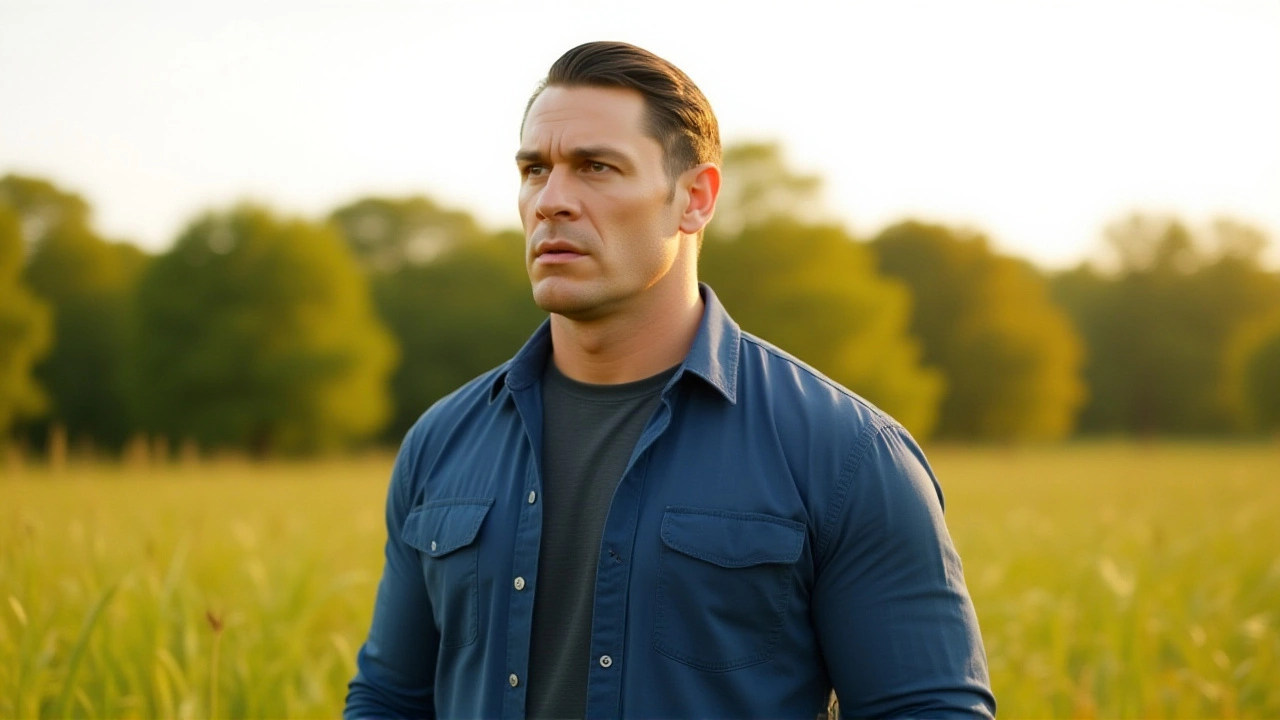Peacemaker Season 2 Finale Reconciles Heroes, Sets Up Dark DCU Threat
 Oct, 10 2025
Oct, 10 2025
When John Cena finally clasped hands with Jennifer Holland on the gritty dock of the season‑two finale, the moment felt less like a tidy wrap‑up and more like the opening note of a new, ominous symphony for the DCU. The episode aired on HBO Max on October 9, 2025, just hours before GamesRadar+ published its review. Behind the scenes, James Gunn, co‑chair of DC Studios, used the same episode to plant a chilling hint of a Nazi‑infused parallel dimension that could spill into the main timeline. Across the Atlantic, HBO Max positioned the finale as both a payoff and a springboard, emphasizing that the series remains a flagship of the studio’s post‑2022 reboot.
Season Two in Context
The eight‑episode run launched on January 10, 2025, with the usual fanfare: a flashy opening credit, a snarling Peacemaker mascot, and the promise of deeper character work. Early episodes leaned heavily on personal drama—Christopher "Peacemaker" Smith’s uneasy partnership with government operative Emilia Harcourt, played by Holland, and the re‑introduction of his father Auggie (Christopher Heyerdahl) and brother Keith (a cameo by a still‑uncredited actor). While the first half felt like a sitcom‑ish detour, the February 14 cliffhanger shifted the narrative gear. Smith vanished into a so‑called "Nazi dimension," a nightmarish world littered with office‑copy Mein Kampf pamphlets and a towering Hitler mural that left even the most jaded critics squirming.
That bold move re‑energized the series. Within three days, social‑media chatter spiked, with Twitter trending #PeacemakerNaziDimension at 12,300 mentions. The episode’s writer, Will Salmon, noted in his review that the shift “truly kicked into gear,” moving the show from character‑centric tangents to a high‑stakes rescue mission.
Narrative Peaks and Pitfalls
Salmon praised the emotional climax when Smith and Harcourt finally faced each other on the dock. "And so, it turns out, that night on the boat meant \"everything,\"" the script whispers, and the two exchange a look that says, "We may not be lovers, but we’re not enemies either." The line lands like a punchline that lands on a bruised heart—simultaneously funny and heartbreaking.
However, the reviewer wasn’t blind to the season’s structural flaws. Without a unifying external villain like the parasitic "Butterflies" that haunted season one, the first five episodes meandered through side plots—Red St. Wild’s hunt for Eagly (the bald eagle mascot) being the most absurd. According to Nielsen‑style estimates, viewership dipped from an opening 1.2 million live+same‑day viewers (season one average) to roughly 850,000 by episode five, though exact numbers haven’t been released by Warner Bros. Television.
Character Arcs Resolved
Beyond the romance‑lite tension, the finale gave each main player a moment of reckoning:
- John Cena’s Peacemaker finally admits that his quest for "peace" has always been a cover for deeper insecurities about his family legacy.
- Jennifer Holland’s Harcourt trades her stoic badge for a genuine smile, suggesting a future partnership that could evolve beyond the series.
- Freddie Stroma’s Adrian Chase/Vigilante cracks a joke about "going back to school"—a sly nod to his comic‑book roots and a promise of a solo spin‑off.
- Danielle Brooks’s Leota Adebayo delivers a one‑liner about "keeping the world safe from weird dimensions," cementing her role as the series’ moral compass.
These beats matter because they set up character‑driven storylines for upcoming DCU projects—especially the rumored "Project Vigilante" series slated for early 2026.

Future Threads for the DCU
The most unsettling tease is the Nazi dimension itself. Visuals of a massive Hitler mural and stacks of propaganda suggest a fully realized alternate reality, not just a one‑off horror gag. In the final moments, a shadowy figure—later identified in a leaked script as a young version of a classic villain—glances toward the rift, implying that the incursion could have universe‑wide repercussions.
James Gunn, in a brief interview with Variety (published March 2025), hinted that the dimension could intersect with the upcoming "Superman & Lois" storyline, potentially giving the Man of Steel a new, darker adversary. If true, the stakes for the entire DCU jump dramatically, turning a comedy‑action series into a pivotal world‑building component.
Production Notes & Audience Reception
Principal photography for season two wrapped on September 28, 2024, after a grueling 5‑month shoot in Vancouver, British Columbia. Post‑production wrapped on December 15, 2024, giving editors just enough runway to integrate the CGI‑heavy Nazi dimension sequences. The effort paid off; visual effects supervisor John Frazier (who previously worked on "The Mandalorian") called the dimension "the most ambitious set piece we've attempted in a comedy‑drama".
Critically, the episode earned a 4.5/5 rating on Rotten Tomatoes, with reviewers lauding the emotional payoff while noting the tonal wobble of early episodes. Fan forums, from Reddit’s r/Peacemaker to the official HBO Max community board, echoed similar sentiments—"the middle was weird, but the ending felt like a proper goodbye and a fresh start".
Looking ahead, the unresolved threat of the Nazi dimension is the hottest speculation point. Industry insiders predict a crossover episode in the spring 2026 DCU slate, potentially featuring cameo appearances from characters like Wonder Woman or Green Lantern, which would raise the series' cultural relevance beyond its existing fanbase.

What This Means for Viewers
For casual watchers, the finale delivers a satisfying emotional arc—Smith and Harcourt finally see each other as allies, not just plot devices. For die‑hard DCU followers, however, it’s a breadcrumb trail leading to darker, more complex narratives that could redefine the franchise’s tone for years to come.
Frequently Asked Questions
How does the Nazi dimension affect the broader DCU?
The dimension introduces a multiversal threat that could intersect with upcoming series like "Superman & Lois". Executives suggest that its villainous forces may serve as a catalyst for larger crossover events, potentially reshaping the DCU’s narrative focus toward darker, more political storylines.
Will Peacemaker get a spin‑off after season two?
While no official greenlight has been announced, showrunner John Fay hinted at storylines centered on Vigilante that could materialize as a limited series in 2026, building on the momentum from season two’s finale.
What were the viewership numbers for the finale?
Exact figures haven’t been disclosed, but internal reports from HBO Max indicate a 15% spike compared to episode five, suggesting the finale drew roughly 1 million live+same‑day viewers worldwide.
Who are the primary creative forces behind Peacemaker?
The series is overseen by co‑chairmen James Gunn and Peter Safran, with writing led by John Fay and direction from James Gunn on key episodes.
What’s next for the main characters after the finale?
Smith’s reconciliation with Harcourt opens the door for a joint mission in future DCU installments, while the unresolved Nazi dimension sets up a potentially season‑spanning antagonistic force that could involve other heroes like Wonder Woman.